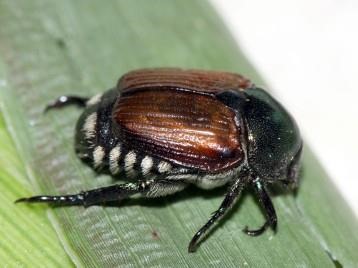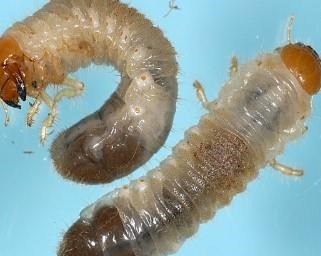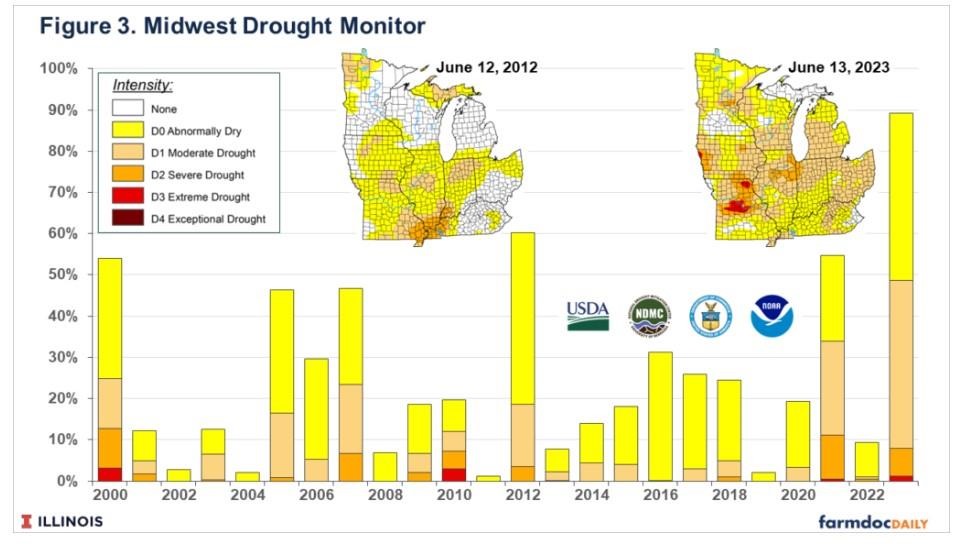By Jennifer Howard
In the eastern United States’ Tall Fescue Belt, grasslands cover 50 million acres, including roughly one and a half million acres in North Carolina. These grasslands support almost 40 percent of the U.S. cow-calf operations and represent a significant opportunity to accumulate and store carbon deeper in the soil profile than cropland. But grazed grassland acreage is dwindling, displaced by development, row crops and hay production.

In addition to supporting livestock products, perennial grasslands provide a range of ecological services including year-round soil coverage and reduced (or eliminated) annual tillage. But because eastern U.S. livestock farms are smaller than those of the Midwest, climate-smart pasture management and the associated carbon markets have been slow to catch traction.
Extension faculty from North Carolina State University’s Department of Crop and Soil Sciences have joined a network of 28 public and private partners to assist producers in implementing climate-smart grassland management strategies and to valuate the practices’ on-farm impact.
Pasture Practices That Pay
The nine-state project led by the University of Tennessee will incentivize 245 collaborating farmers with a total of $12.2M in payments to implement, monitor, and share pasture management practices proven to increase soil organic carbon storage; improve soil and water quality; mitigate GHG emissions and reduce off-farm inputs.
Identified practices include the use of perennial native grasses, improved grazing management, alternative nitrogen fertilizer sources, soil amendments, silvopasture, and perennial grass buffers.
Collaborating farmers can choose any number of the six practices to implement, while maintaining control areas, and will be reimbursed for expenses on a per-acre or per-unit basis.

Miguel Castillo, NC State Forage Specialist and Associate Professor, speaks to land and livestock managers during a silvopasture field day in Goldsboro, NC.
Filling the Gap
Climate-smart pasture management holds known positive soil and environmental potential, so why aren’t more farms already using these strategies? NC State forage extension specialist Miguel Castillo says it comes down to the bottom line.
“A knowledge gap between environmental baselines and management impacts prevents many farmers from adopting climate-smart practices. Understandably, many land and livestock managers are risk-averse to alter their management practices or engage in uncertain markets.”
Without predictable economic outcomes, margins are too tight to justify experimentation.
“This project is not research,” Castillo said. “We are working with land and livestock managers to use proven tools to promote conservation, reduce GHGs, and improve nutrient distribution — all without compromising the grazing season nor the productivity of the system.”

Recruiting Underserved Producers
Compared to the Great Plains area, Tall Fescue Belt cattle and small ruminant producers have not received the same attention from carbon market developers. Smaller farm sizes and inherent contract logistics make these producers a complex yet untapped pool of contributors to GHG mitigation and carbon sequestration.
The project poses particular benefits to small and medium-sized as well as socially disadvantaged operators. Beef cattle producers have the lowest average farm income among all major commodities and the greatest representation of socially disadvantaged producers including female, Native American and Black farmers.
To engage these communities, Extension specialists and agents will seek farm collaborators emphasizing beginning, veteran, limited resource, and under-represented farmers. Economically distressed counties will also be prioritized.
In NC, 27 collaborating farms will be selected from across the state’s three agricultural regions. The farm selection process will be led by county agents in the summer of 2023. Farmers interested in participating should communicate with their local county livestock forage extension agent.

A mixed herd at the NC State Small Ruminant Unit.
Spreading Effects
The project’s goal is to use the pilot farms as a springboard for wider practice adoption. The lessons learned from both data and producer experiences will underpin a vast educational outreach on climate-smart grassland management.
A team of statewide Extension specialists and agents will provide the initial training and ongoing hands-on support to participant farmers regarding practice implementation and monitoring standards. Local agents will further act as area educators, conducting field days and regional events as well as producing informational print, video and social media materials to engage a broader audience.
While the project’s hard data is expected to be influential, the project leaders understand that farmers trust farmers. To amplify the project’s impact, collaborating farmers will be positioned as peer educators following the Master Gardener and Master Naturalist models. These early-adopting farmers will become practical knowledge sources for fellow producers and will host on-farm professional training events as well as field days for farmers and landowners.
But it’s not only collaborating farms that can benefit. Other area farmers who voluntarily adopt the targeted management practices will have an opportunity to engage with a climate-smart supply chain through industry partner Tyson Foods.
The crescendo of producer engagement could expand the project’s impact from 47,000 initial acres to nearly half a million.

NC State forage and grassland intern Diego Contreras speaks to producers during a multi-county extension event.
Creating a Community of Practice
With so many perspectives in the production chain represented, the project partners want to enable a free flow of communication to improve understanding and outcomes. They envision a community of practice where all partners and collaborators interact in quarterly open-forum virtual meetings and a concluding in-person meeting in the fifth year.
“These interactions are the foundation blocks for an active apprenticeship community where challenges and potential solutions could be better identified and implemented,” Castillo said. “It’s a unique opportunity to develop an end-to-end community with high potential to deliver prominent outcomes”
Measurement for Grassland Managers and Markets
Because large-scale soil GHG emission monitoring is costly and logistically complex, the group plans to measure soil GHG (CO2, CH4, and N20) emissions and the carbon sequestration effects of fertility management practices on sites with established practices. Controlled micrometeorological flux towers and soil chambers will collect precise data to create reliable models.
For broader interpretation, the group will use soil samples from collaborating farms to calibrate and validate the predictive COMET-Farm carbon accounting tool, which doesn’t currently include Tall Fescue Belt data. The methodology was designed to align with global corporate GHG protocol standards for future relevance.

A falling plate meter measures forage biomass.
Even modest N2O reductions are expected to significantly impact agricultural climate mitigation. But on-farm, reduced CO2 emissions may provide more immediate benefits in fuel savings, soil health improvements, and potential carbon market payments.
“The scale and focus of this project are unprecedented, especially in the Tall Fescue Belt,” Castillo said. “For the first time, we have a network of people and locations that will document the effect of on-farm grazing practices and the potential to affect GHG emissions and carbon sequestration. These data will set a clearer baseline and understanding for future initiatives ”
Expanding Carbon Market Access
Project partners believe that documenting the on-farm impacts of traditional versus innovative management practices will reduce uncertainty and risk for both producers and carbon credit buyers, which has stymied grassland carbon market development.
Verification is a key component for market confidence. The established links between management practices and outcomes from this project will merely require practice verification (rather than intensive monitoring protocols). Remote sensing and spot checks offer simple monitoring options for markets.
Empowering Producers
Project data will also be used to quantify and report carbon and GHG impacts so that producers can select profitable practices that render a steady supply of climate-smart commodities.
An interactive web platform (called GrassRoots) will allow producers to estimate differences in their farm’s carbon storage capacity, expected net returns, and a minimum carbon credit price for return on their practice investment.
Because climate markets are in their infancy, the group is developing multiple strategies to help producers take advantage of potential market evolutions including verified supply chains, ecosystem service offsets and a producer credit cooperative.
NC Pasture Impact
In 2021, NC was home to 893,000 head of cattle and small ruminants. Income from these sources equaled over $521M in 2020, roughly 5% of NC’s agricultural receipts, concentrated on smaller farms.
In addition to providing forages to sustain pasture-based livestock systems that ultimately provide meat, milk, and fiber, Castillo says that grasslands provide other vital ecosystem services like soil conservation, carbon sequestration, regulating water filtration, and even as means to break pest cycles when used in rotation with row crops.
“Although these services sometimes go unnoticed and undervalued, they are vital to promoting the resiliency and productivity of the pasture-based livestock systems of North Carolina and the entire Tall Fescue Belt.”

A tall fescue pasture on a producer’s farm in Statesville, NC.
Want More Climate-Smart Impact?
Crop and Soil Sciences’ work impacts farmers, students, and NC citizens through innovations in food, feed, fuel, and fiber. For more information about NC grassland management visit the Forages Extension Portal and follow @foragesncsu on Twitter.
Track how our discoveries affect agriculture and environmental science by joining our weekly newsfeed and also following our Climate Mitigation through Soil and Agricultural Management group (#NCSTATECASM).
Improving NC’s agricultural economy through diversification is just part of how we are growing the future.

Source : ncsu.edu